Public Interest Technology - Knowledge Network
The Public Interest Technology - Knowledge Network is a networking platform for entrepreneurs, faculty, students, and professionals who want to create technological solutions for the common good. Furthermore, platform is aimed at providing a space for Entrepreneurs who are Black, Indegenious, People of Color (BIPOC) to share their experiences and stories and bringing underrepresented voices in the spotlight.
The Purpose of the Knowledge Network
The PIT Team at the University of Michigan aims to shape the field of PIT into a more equitable environment by creating the PIT Knowledge Network (PIT-KN). This platform has two main goals:
- Create a thriving environment where PIT Entrepreneurs can share tacit knowledge in the form of experiences and stories.
- Convert and present this tacit knowledge as explicit knowledge to be used by other entrepreneurs, students, or practitioners in the field of PIT.

Assessing User Needs: The PIT Entrepreneurs
I started working when the project was in the discovery phase and 10 interviews with PIT Entrepreneurs (or PITers) had been conducted.
To make sure PIT Entrepreneurs, the primary target users, remain central to the design of the platform, I started by analyzing the user interviews with the goal of extracting meaningful and well-defined objectives for the PITKN and further converted the interpretation notes to an Affinity Analysis.

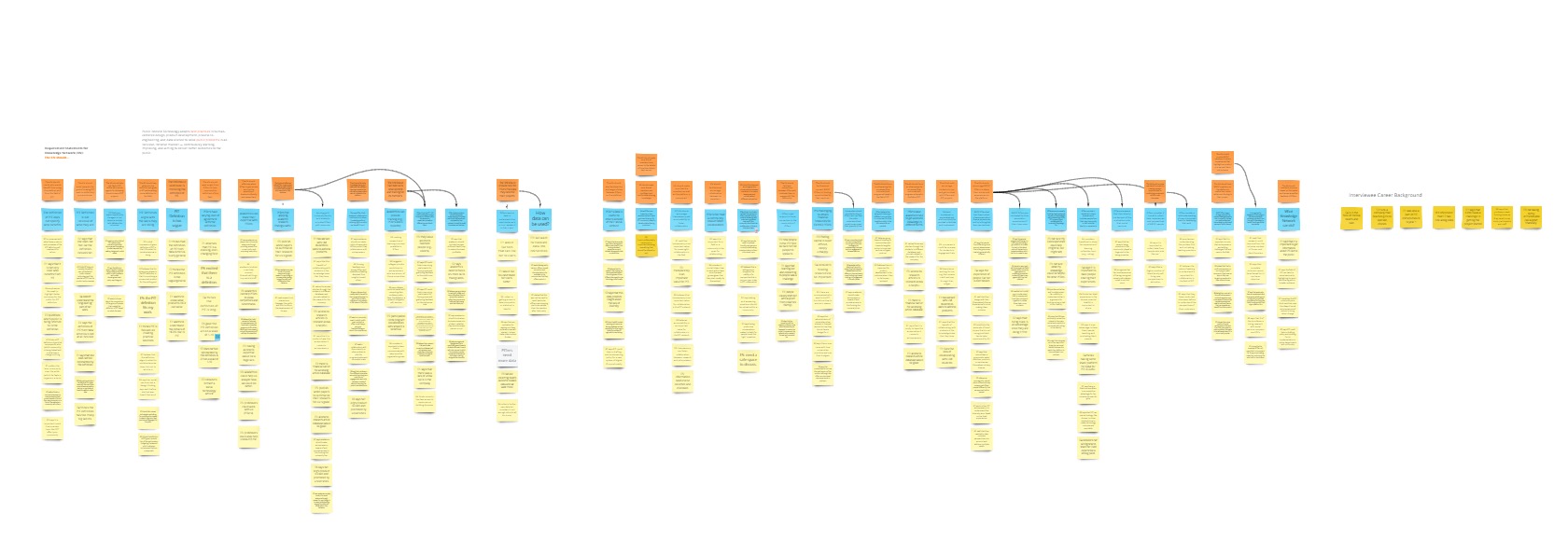
The structure of the affinity analysis done in Miro is as follows:
- Yellow Notes: Short Notes from the Interview Interpretation process
- Blue Notes: Aggregation of similar experiences, needs and requirements from PITers
- Orange Notes: An Objective Statement for the PIT-KN corresponding to the Blue note below
- Dark Yellow Notes: Outliers or unique experiences that could not be aggregated under any of the groups, but important to be tracked.
How Might We: Brainstorming and Ideation
Using the 26 Objective Statements (the orange notes from the Affinity Analysis), I created a space for my team to add ideas for how might we address some of them. This brought forward a great host of ideas, including inspirations from existing platforms such as LinkedIn, Reddit, Facebook, and other ones where people like to connect and share ideas.
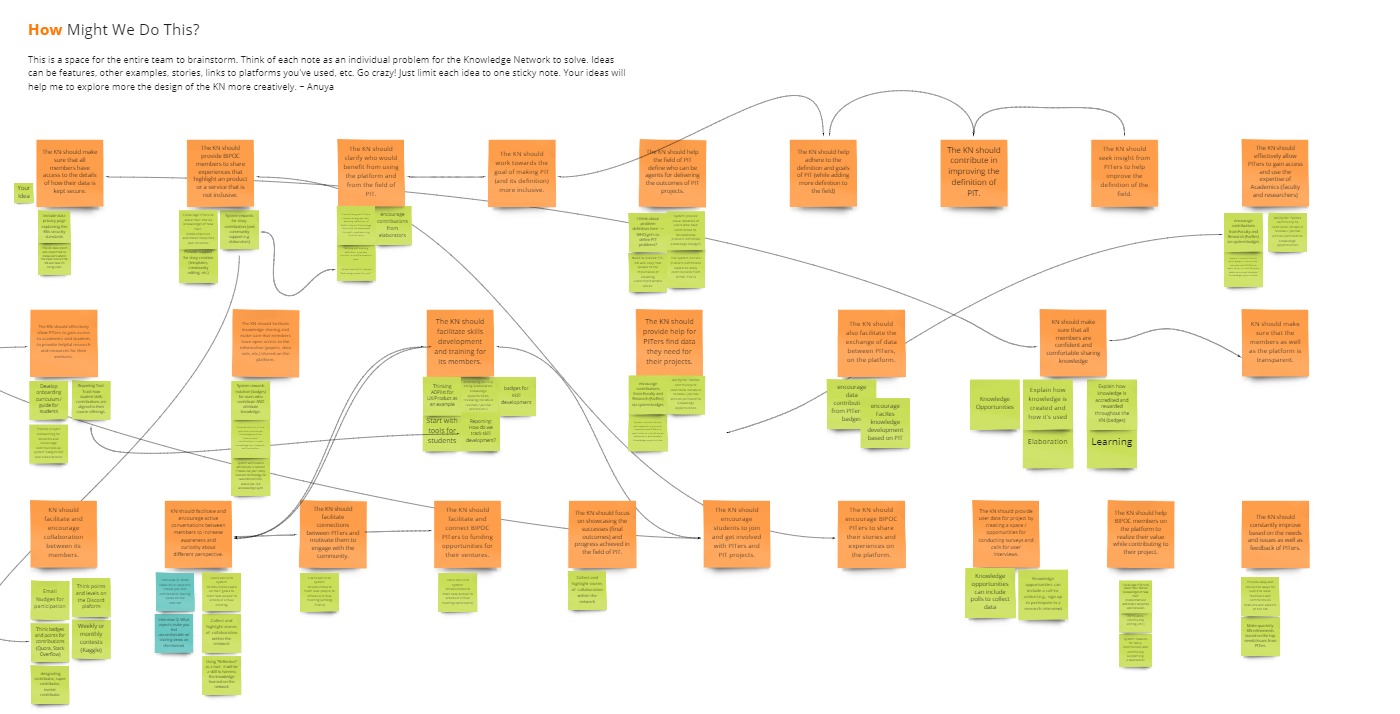
Comparative Analysis
As I assessed these ideas, I decided that it was important to assess some of these platforms and how they meet or don't meet the requirements of PIT Entrepreneurs. Thus, I combined the knowledge of user pain points and user needs with a competitive analysis of platforms widely used by businesses and non-profits for their networking needs to find which features are beneficial for the PIT Knowledge Network as well as how our platform could better serve the needs of the PITers.
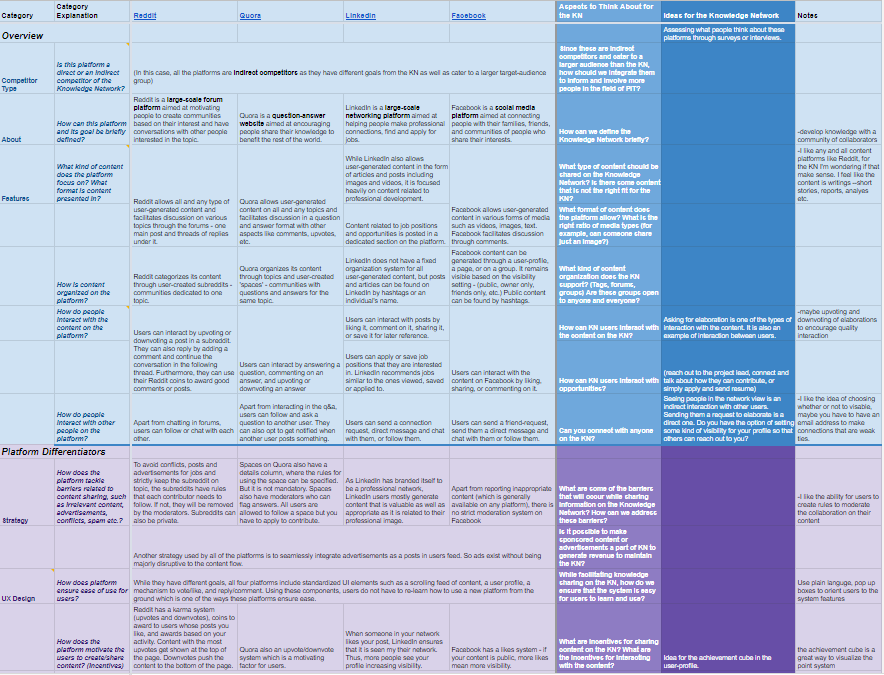
Creating a Set of Key Objectives
Based on the insights from the affinity analysis and the comparative analysis, as well as input from my team, I created a set of eight main objectives that would help shape and drive the design and development of the Knowledge Network.
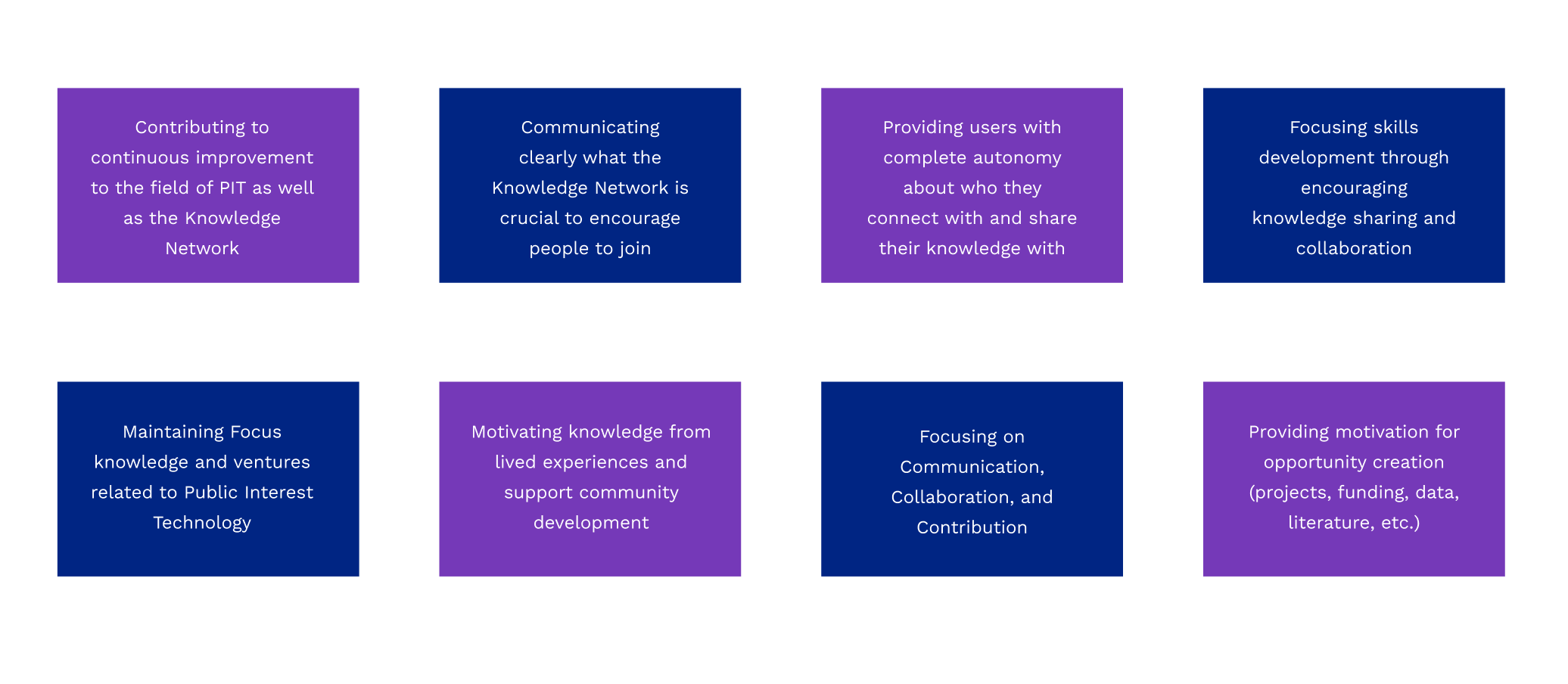
Solutions for a Thriving Network
Based on the key objectives derived from the user research and through collaboration with the lead developer and the operations team, the following solutions were proposed to be central to the Knowledge Network.
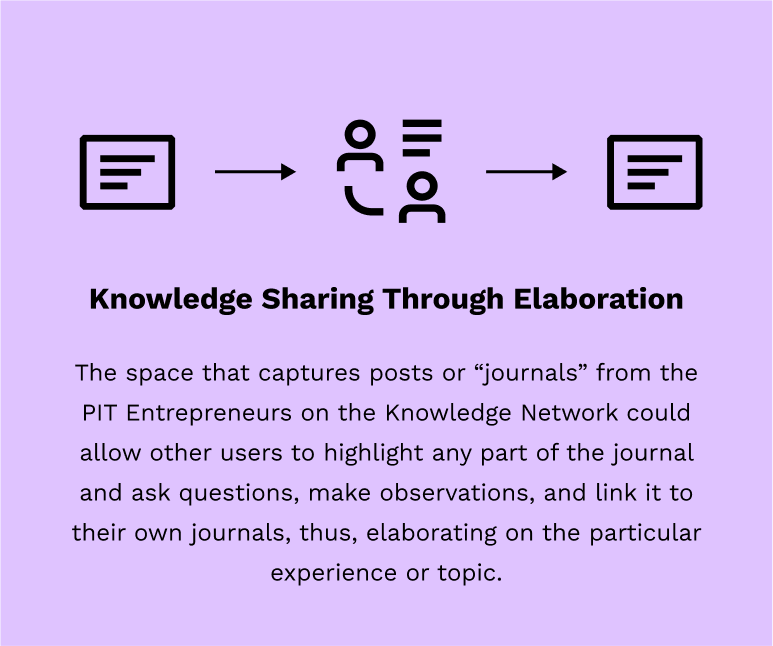

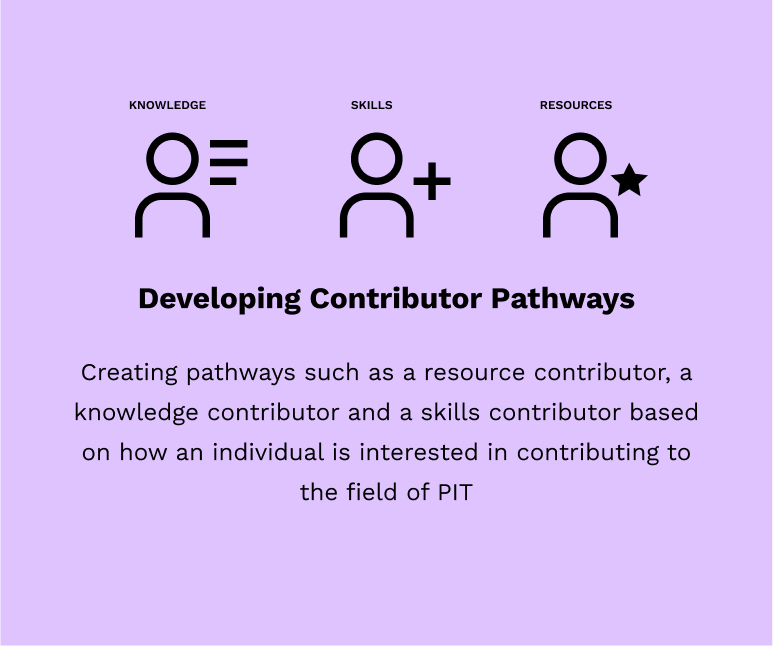
Expanding on Elaboration using User Personas and Scenarios
Based on the team's assessment, the idea for elaboration was chosen to be expanded on in the first iteration of the prototype. To better define how the users of the platform would use this idea as well as benefit from the elaborating on journal entries, I created three user scenarios.
These scenarios showcase the idea of elaboration and how PITers can find or gain solutions and resources for their problems and get involved a supportive community.
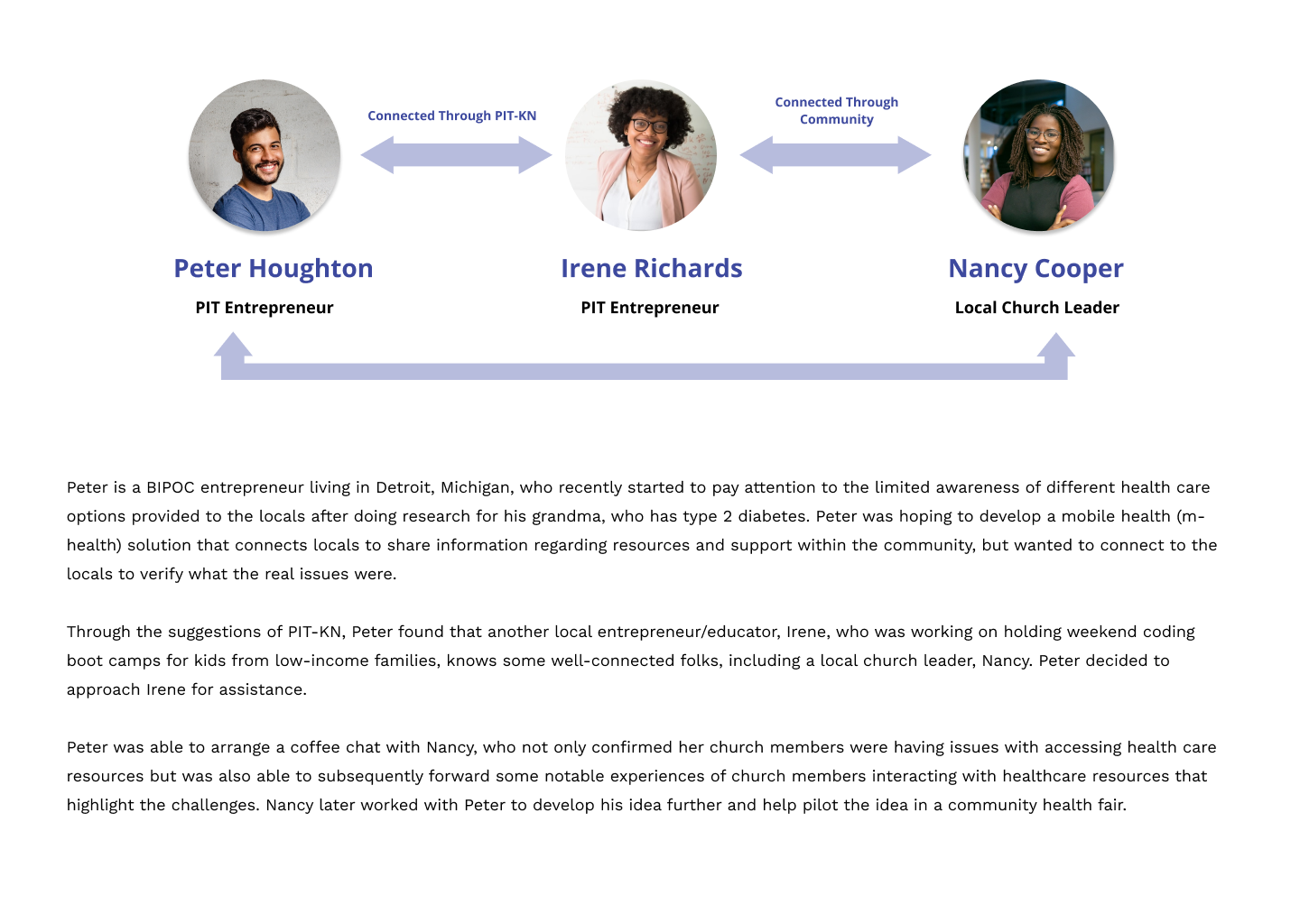
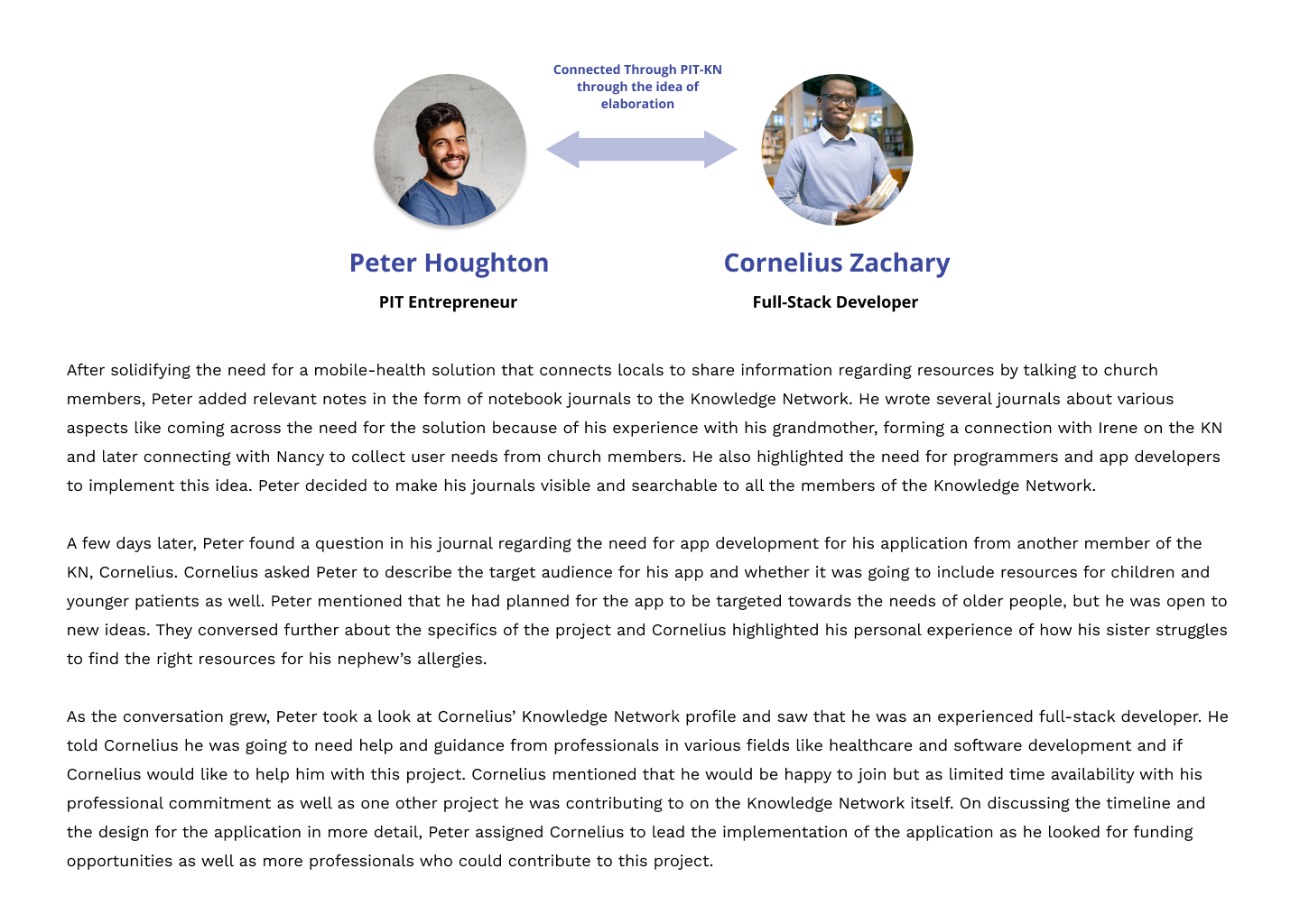
To further define the interactions between the user and the platform which would support the overall design of the Knowledge Network, I converted the scenarios into detailed interaction scenarios.
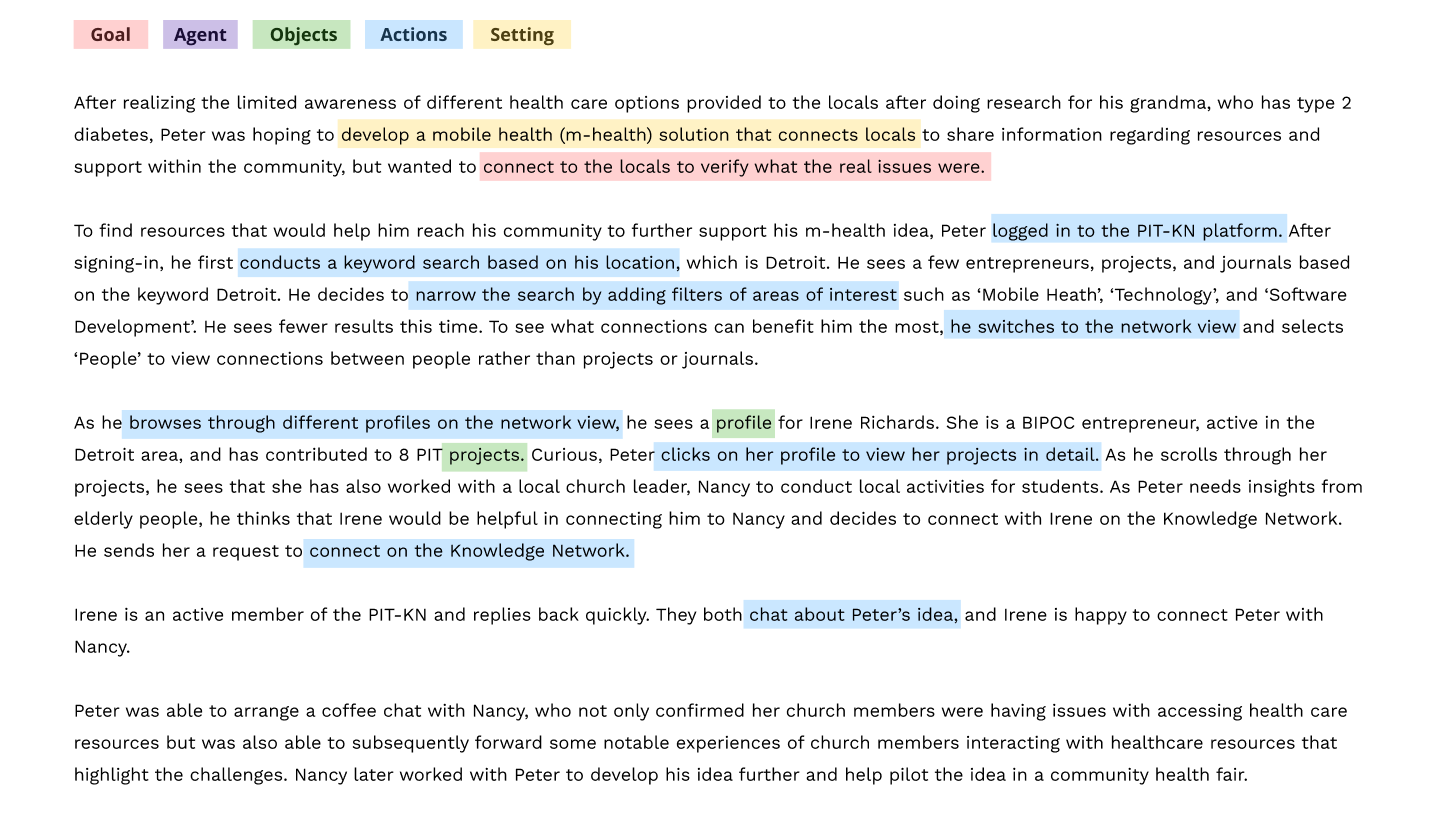
Designing a Interactive Prototype for the Knowledge Network
Given that the user scenarios established high-level as well as detailed interactions between the user and the Knowledge Network, I created an interactive, high-fidelity prototype of the Knowledge Network.
.png)
.png)
.png)
.png)
Try the PIT Knowledge Network Prototype Here
Results and Next Steps
The Interactive Prototype was found to be very useful by the PIT Team for various purposes:
- It serves as a design guide for the working prototype of the actual platform
- It was recently included at several demos, kick-offs and presentations to visualize the platform and its outcomes
- It was also used to collect feedback from PIT Entrepreneurs and Students in a survey. The suggestions and feedback were documented and can be used in the next iteration of implementing ideas and making improvements to the prototypes.